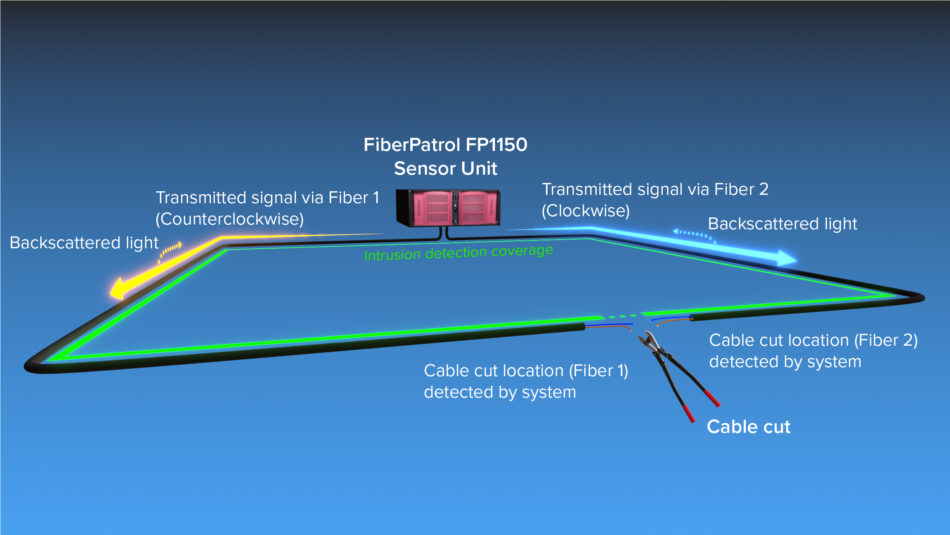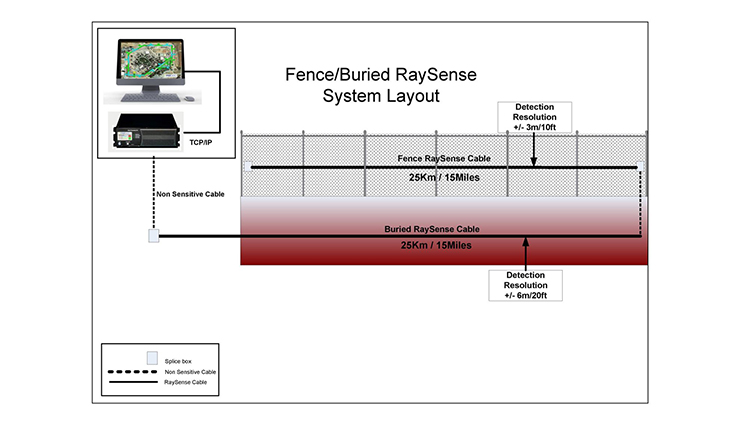Key Factors of Fiber Optics Infrastructure for Security Installations You Need to Know
Key Factors of Fiber Optics Infrastructure for Security Installations You Need to Know
Blog Article
Improve Your Safety And Security With Advanced Fiber Optic Protection Systems
In an age where security is critical, advanced fiber optic safety systems present a compelling solution for boosting safety throughout different environments. What effects do these innovations hold for future security measures?
Advantages of Fiber Optic Protection
Using the benefits of fiber optic technology substantially improves safety systems throughout various applications. One of the main advantages is the raised data transfer ability, permitting the transmission of huge quantities of data at broadband. This is especially crucial for real-time video security, where high-resolution feeds can be sent without latency, ensuring prompt feedback abilities.
In addition, optical fiber exhibit remarkable resistance to electromagnetic disturbance, which is important in environments with prospective signal interruptions. This reliability guarantees constant performance in vital safety and security procedures. Fiber optic cable televisions are much less prone to tapping and unapproved access compared to conventional copper circuitry, consequently enhancing data integrity and discretion.
Another noteworthy advantage is the durability of fiber optic systems; they are a lot more immune to ecological aspects such as moisture, temperature changes, and destructive materials. This resilience translates to lower maintenance expenses and longer lifespans for security installations.
Finally, the light-weight nature of fiber optic cords assists in easier installation and directing, especially in intricate infrastructures (fiber optic security system). Inevitably, the integration of fiber optic technology into safety systems not only reinforces security procedures however also enhances operational effectiveness
Secret Features to Consider
When assessing fiber optic safety and security systems, several essential features need to be taken into consideration to guarantee ideal performance and effectiveness. Evaluate the system's detection range and level of sensitivity; a comprehensive range permits for checking large locations, while high level of sensitivity makes sure that even minor disturbances are detected without delay.
Next, consider the assimilation abilities of the system. A fiber optic safety and security system need to flawlessly user interface with existing safety measures such as cams and alarms, creating a natural protection network.
Longevity and ecological resistance are additionally vital features. Make certain that the system is developed to withstand severe climate condition and potential physical dangers, as this will certainly prolong its functional life-span.

Finally, explore the scalability of the system. A robust fiber optic security system must be easily expanding to suit future requirements without significant overhauls. By very carefully considering these attributes, you can select a fiber optic security service that improves safety and safety in your environment.
Setup Process Review
To effectively apply a fiber optic safety and security system, a methodical installment process is necessary. This process starts with a detailed website assessment to determine the certain security requirements and to identify optimum locations for fiber optic cable televisions and protection tools. Following this assessment, the setup group will certainly establish a thorough plan, including cord pathways, description needed tools, and compliance with neighborhood regulations.
Next, the setup entails laying the fiber optic wires, guaranteeing they are safeguarded from environmental factors and physical damages. Proper handling methods are important, as fiber optic cords are delicate and can be conveniently harmed. After the cabling is mounted, ports and discontinuations are diligently finished to ensure signal honesty.
The subsequent phase includes mounting protection devices such as cams, motion detectors, and alarm systems, all incorporated with the fiber optic network. Extensive screening is carried out to verify that all parts are functioning appropriately and to make sure optimal performance.

Contrasting Fiber Optic to Conventional Systems
The evolution of security modern technology has actually brought about substantial improvements in the contrast in between fiber optic systems and standard copper-based systems. Fiber optic systems use light to transmit information, offering premium transmission capacity and rate contrasted to their copper counterparts. This causes improved data transmission capabilities, making fiber optics perfect for high-resolution video clip monitoring and real-time tracking.
Furthermore, fiber optic cable televisions are immune to electro-magnetic disturbance, lowering the probability of signal degradation triggered by outside elements. This characteristic makes sure consistent efficiency, also in challenging atmospheres. On the other hand, standard copper systems are a lot more susceptible to disturbance, resulting in prospective susceptabilities in security applications.
Durability is one more benefit of fiber optic systems. They are much less prone to damage from ecological factors such as moisture and temperature variations, which can compromise copper electrical wiring. Moreover, optical fiber are lighter and thinner, permitting less complicated installment and lowered physical footprint.
Nonetheless, conventional systems have a tendency to have lower preliminary prices, making them attractive for budget-conscious jobs. check my site While fiber optic systems might call for a higher upfront financial investment, their lasting advantages-- such as lower maintenance prices and higher integrity-- frequently exceed the initial expenditure, positioning them as an exceptional option for contemporary security needs.
Future Patterns in Safety Innovation
Emerging patterns in safety modern technology are poised to change the landscape of surveillance and threat detection - fiber optic security system. As companies increasingly face sophisticated risks, innovations such as expert system (AI) and artificial intelligence (ML) are coming to be essential to safety and security systems. These innovations enhance the capability of fiber optic systems by making it possible for real-time data evaluation, recognizing abnormalities, and automating reactions to prospective breaches
Additionally, the integration of the Web of Points (IoT) is reinventing safety frameworks. IoT gadgets can supply detailed situational understanding and help with seamless communication between various safety elements. This interconnectedness enables a lot more effective monitoring and address faster case reaction times.
Biometric authentication is also obtaining energy, offering a higher degree of protection with one-of-a-kind physical characteristics. As this modern technology progresses, it is likely to be incorporated into fiber optic systems for boosted access control.
Verdict
In conclusion, advanced fiber optic safety systems stand for a substantial improvement in safety and security and surveillance technology. The change from typical systems to fiber optic solutions reflects a growing trend in the direction of extra efficient and effective safety and security actions in a progressively complicated technical landscape.
Report this page